29 Sep 2023
Words
John Miller Informer 108
Black Tie Service, Blue Jeans Attitude
Richard Crawford is Marriott’s dealmaker in Australasia. The seasoned hotelier talks about his stellar career, catching his second wind with Marriott and his plans to expand the hotel giant’s footprint in our region.
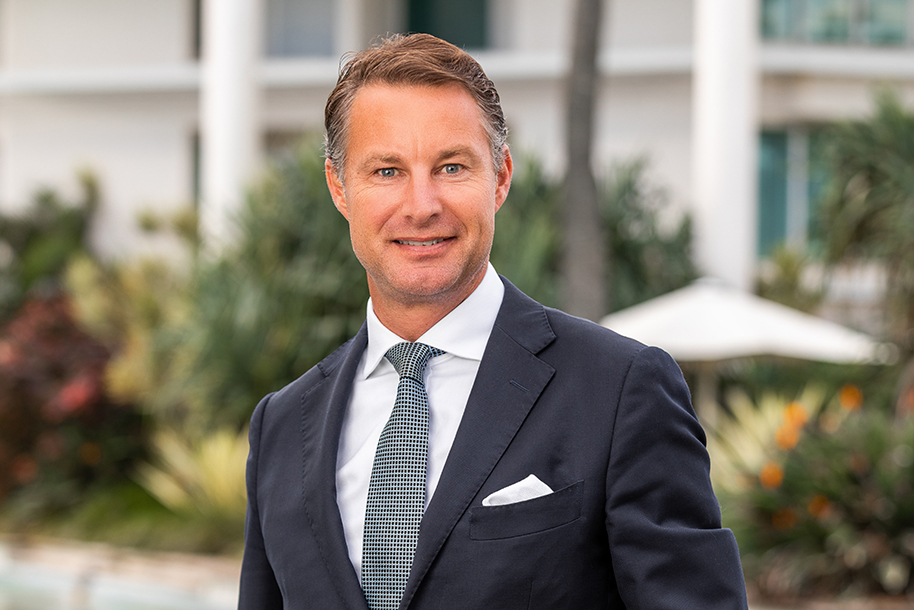
Richard Crawford
Vice President Marriott International
Global behemoth that it is, Marriott International organises itself by what it calls a “continent structure.” In this part of the world, its point men are vice presidents Richard Crawford, who heads hotel development, and Sean Hunt who runs operations.
"Sean and I joke that I get the honeymoon while he gets the marriage,” says Crawford.
Crawford joined the world’s largest hotel chain in 2017 off the back of a high-flying 25-year career in the travel industry. This included almost four years heading the acquisitions team at Mantra Group immediately prior to joining Marriott, six years as board director of the Tourism Industry Council Tasmania, and five years, from 2004 to 2009, as owner of Hobart’s feted The Henry Jones Art Hotel. When he owned The Henry Jones, Crawford adopted a working mantra that epitomised his professional but laidback approach to running the hotel.
“I had no hotel experience, but I coined a phrase, ‘Black tie service with a blue jeans attitude,’” he says. “I wanted to keep it real. I wasn’t particularly interested in international hotel brands. If anything, I was probably anti-brand. We were an independent hotel and wanted to do it our way.
“It was the most exciting, exhilarating and rewarding four and a half years of my life. You don’t expect to fall in love with a business, but I did with The Henry Jones. I just fell in love with hotels. I found something I was good at.”
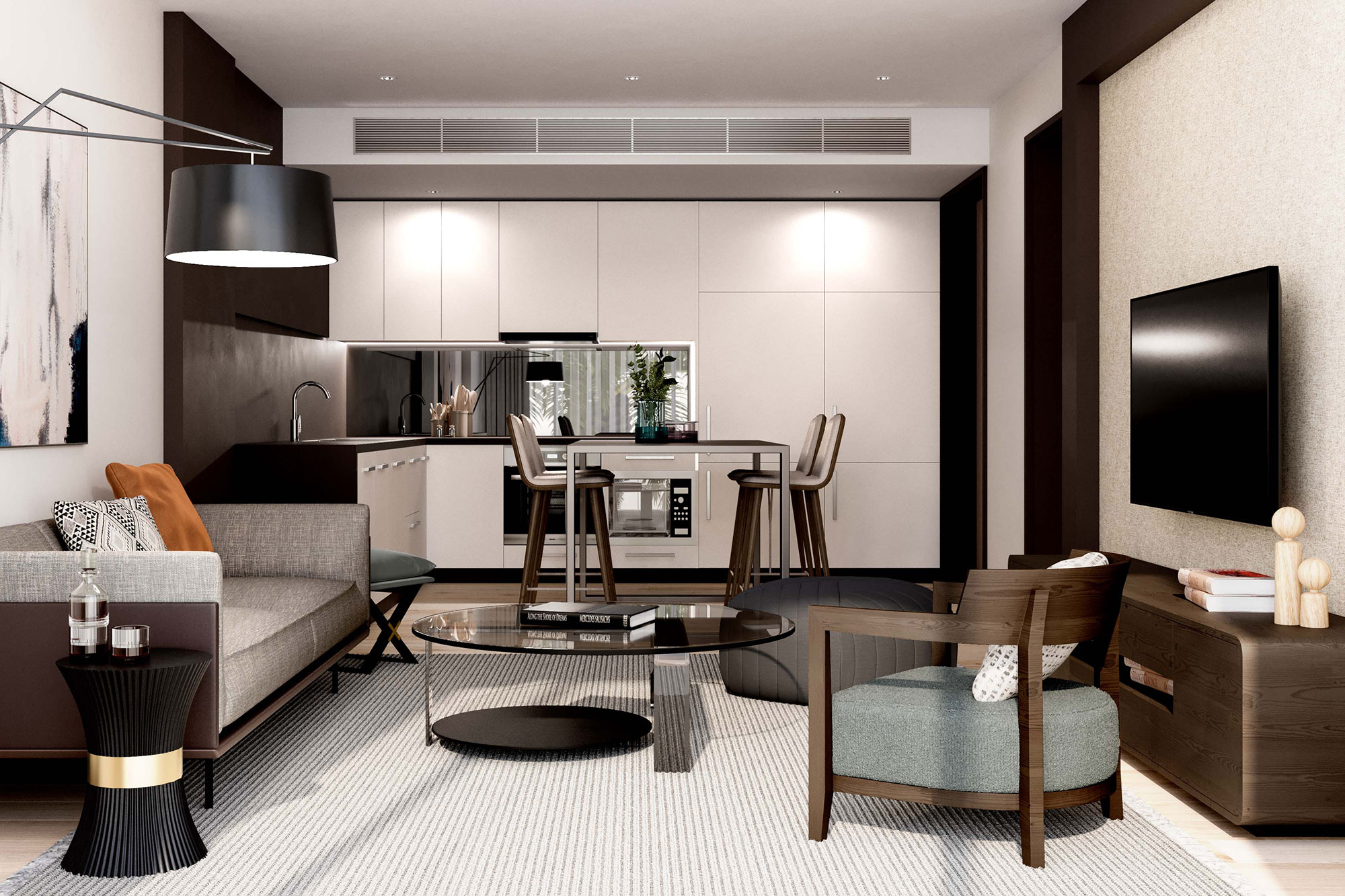
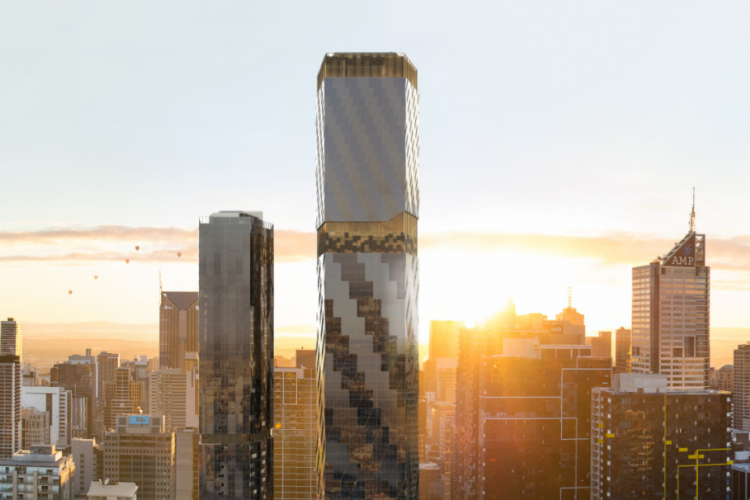
Pictured: Marriott Port Moresby (left), The Ritz Carlton Melbourne (right)
Not just good but exceptional. Crawford turned a rundown warehouse into Australia’s most celebrated hotel. During his ownership, the Hobart waterfront property earned a swag of prestigious architectural, design and magazine awards. The sandstone building housed a jam factory in the late 1800s, the enterprise of IXL pioneer and local son Henry Jones, who Crawford honoured in the hotel’s name.
Crawford reinvented the building as Australia’s first dedicated art hotel, a 56-room luxury offering that housed its guests in a rotating gallery adorned with works from emerging Tasmanian artists. Crawford reluctantly sold The Henry Jones in 2009 only because the buyer made him an offer too good to refuse.
“My heart said no, my head said yes,” says Crawford. “I should say my accountant said yes. I had separation anxiety from that business when I sold it.”
Now with Marriott, Crawford’s mission is to expand the company’s portfolio in Australia, New Zealand and the Pacific. When he joined the Maryland based colossus in 2017, Marriott had just six hotels in the region. Today, it has 44 with 20 more to come. So far this year, Crawford has overseen the opening of two flagship Marriott hotels in the Victorian state capital: Le Méridien Melbourne in Bourke St, and The Ritz-Carlton Melbourne in Lonsdale St.
The Ritz-Carlton Melbourne was a milestone for Marriott, taking the chain to 1,000 hotels in the Asia-Pacific region. Adding to this perfect numerical symmetry, the hotel was the 111th Ritz-Carlton to open in the world.
Crawford is mindful of Marriott’s impressively long pedigree and his relatively newfound place in it. He joined Marriott shortly after its ground-breaking 2016 acquisition of Starwood, a US$13 billion kingmaking deal that turned the three generation family business into the world’s largest hotel chain, eclipsing Hilton. Today, the multinational has over 8,500 hotels across 31 brands and 139 countries, operated by a workforce of 800,000 staff.
“Marriott’s trajectory has been a 96-year journey,” says Crawford. “There aren’t many companies, certainly in the hospitality industry, who’ve been around that long. It’s incredible to think we have over a million guests in our care every single night.”
Crawford got his own start in the travel industry working for the family business, started by his father, which operated a successful portfolio of travel agencies, a large hire car company, property interests and smash repair business in Tasmania.
“I often say, I never had a job until I turned 40 because I worked in the family business,” he says. “Everyone comes to hotel development roles for international companies from different pathways. Many come from the legal background. I came to it from a family business background. That’s why I get satisfaction out of working for a Wall Street company that’s still controlled by its founding family.”
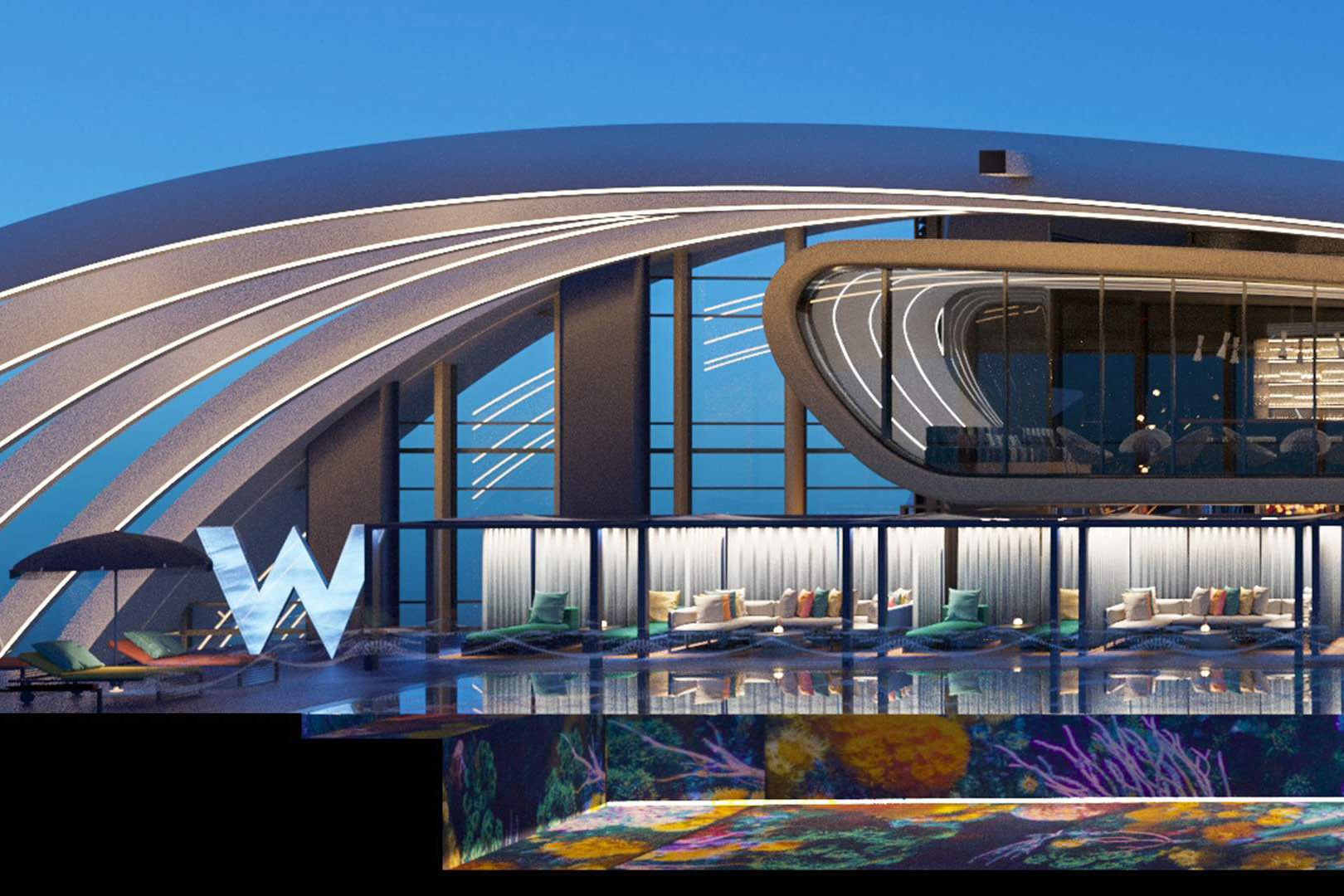
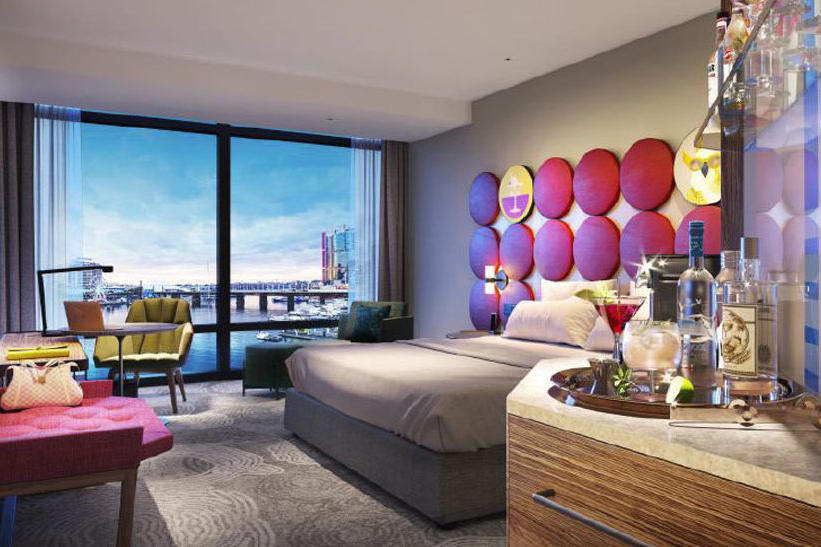
Pictured: W Hotel Sydney
By year’s end, Crawford will have checked off three more Marriott openings in his territory. In Papua New Guinea, Marriott Executive Apartments will expand the group’s footprint to 140 countries when it opens in Port Moresby in November. In August, Marriott’s first Moxy in Australia will open with the 301-room Moxy Sydney Airport. Sydney will also see Marriott’s most important launch in Australia to date with the long-anticipated opening of W Sydney in October.
The 585-key Darling Harbour hotel has been five years in the making and will be Marriott’s biggest W in the world.
“It will be a monument, a flagship of fun and luxury,” says Crawford. “It’s really out of the box. People have been saying for a few years they don’t build big hotels like this anymore. Well, we’re just about to open one.”
Another area of development Crawford is excited about is branded residences. Though well-established overseas, Crawford says the idea is yet to catch on in Australia, but he is hopeful the stars will align shortly.
Marriott International is the world’s largest operator of branded residences, which have typically been the domain of its luxury brands such as Ritz-Carlton, St Regis, EDITION and W.
“Marriott has demonstrated in places like West Hollywood, Miami and New York that price premiums between 30 to 50 per cent can be gained by developers on an apartment that is branded,” Crawford says.
“We really want to do it in Australia and want to find the right partner to do it with.
“We won’t do it anywhere, with anyone, or with any brand. The important piece of the puzzle will be the developer acknowledging that their chosen brand from Marriott’s portfolio will deliver a price premium that justifies them paying a royalty.
“Every time we’ve talked about it for the past decade, the conversation has been a short one. But we think the time is approaching for developers who want to find a point of difference in selling their apartments ahead of their competitors.”
Crawford says Marriott is in no rush. For a company that has been in the hotel game for almost a century, Marriott takes the long view, he says.
“We take a 20-year outlook not a one-year outlook. The gestation period of hotels is not the measure of success for us. It’s the quality of the outcome. If a hotel developer is putting $100 million into a project, it’s not for us to rush them.
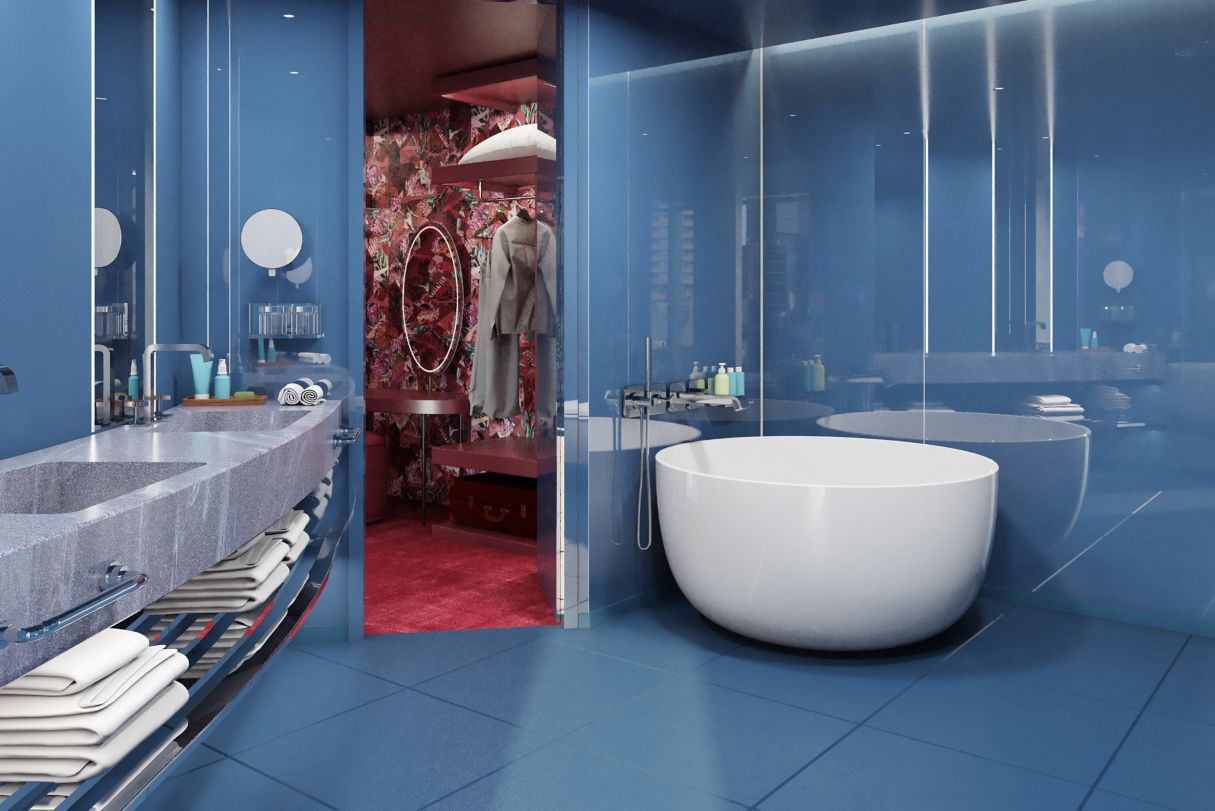
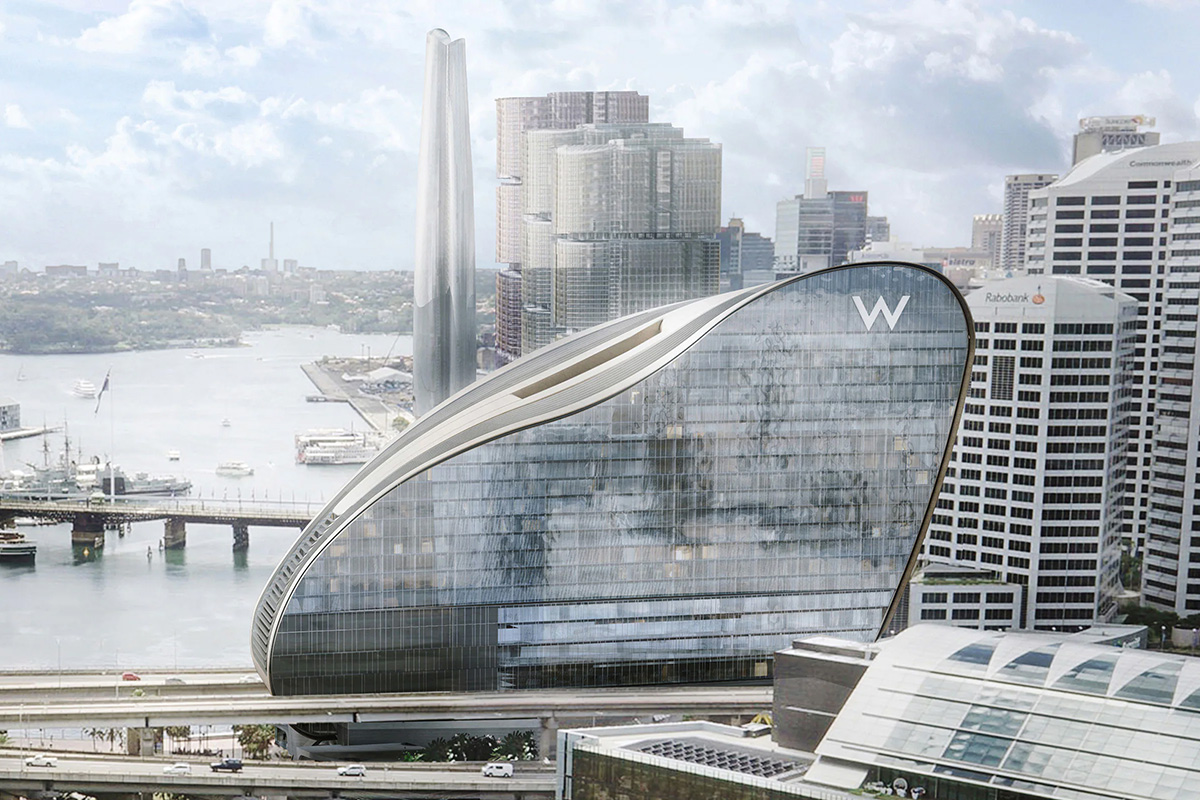
Pictured: W Hotel Sydney
“It’s for us to work with them to make sure we get the right hotel at the right time.
“I learned a long time ago that in the hotel business the wrong thing to do is sit with a map in front of you, put flags on it and say, ‘This is where I want to be.’
“As a management company and as a franchisor we need the hotel investment community to tell us where they’re prepared to plant their money. We follow the capital.”
At 50 years old, Crawford is far from eyeing off retirement, but he acknowledges that Marriott will probably be the last corporate job he’ll ever have.
“As it turns out, my time with Marriott has been even more rewarding than the first 40 years of my entire life,” he says. “I’ve had a second career I never imagined possible. I’ve learned so much and had a really joyful experience I could never have anticipated, which says more about Marriott than it says about me.
“I was in Bangkok recently at a gathering of some senior Marriott executives.
“Mr Marriott Senior had just passed over the chairmanship of the company to his son, David Marriott. I hadn’t met David.
“I saw him in the hotel foyer and introduced myself. I said, ‘Mr Marriott, I’m Richard Crawford, I look after Australia, New Zealand and the Pacific. I’m only one percent …’
“He said, ‘Richard, stop. You need no introduction.’ This is the chairman of a company with more than 800,000 people in it.
“For him to recognise me says a lot about him as a person, and that he’s a product of his father and grandfather. That’s the only recognition I need. That’ll keep me going for the next five years, I reckon.” END
